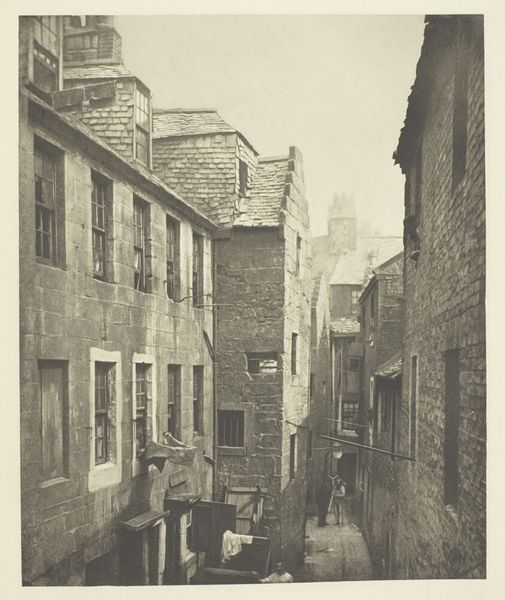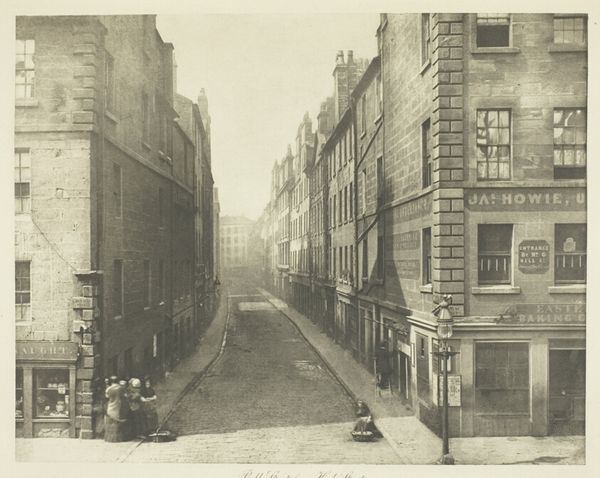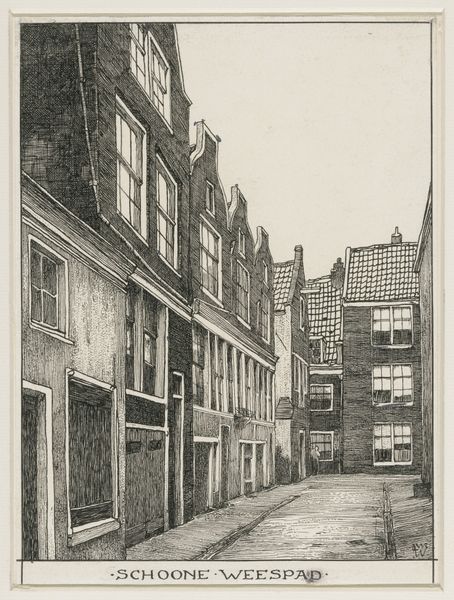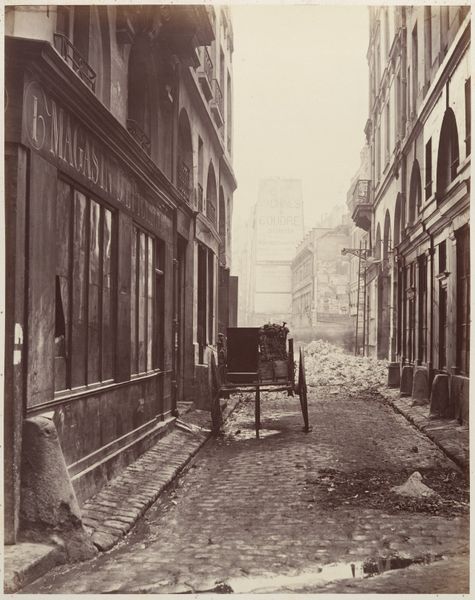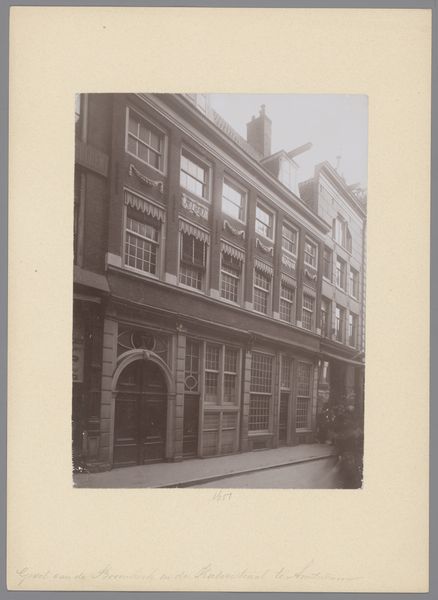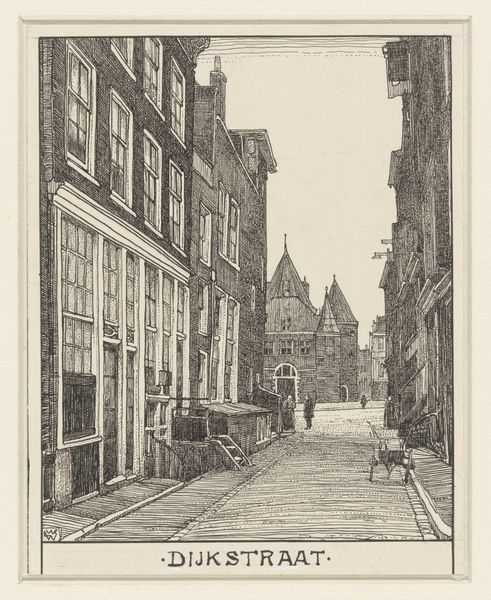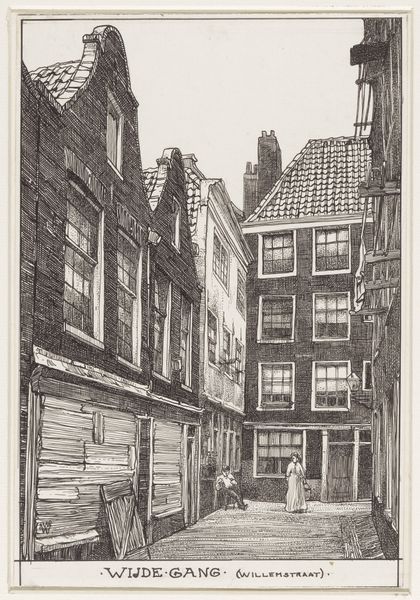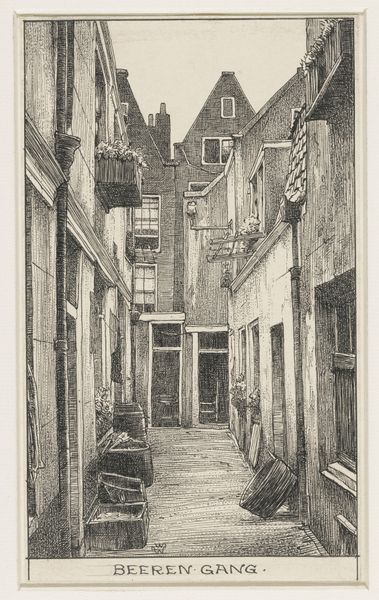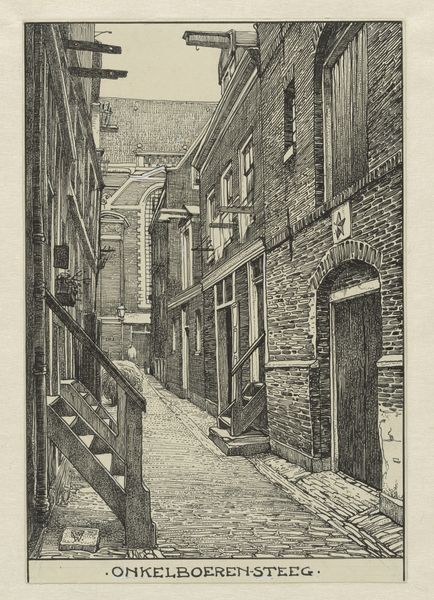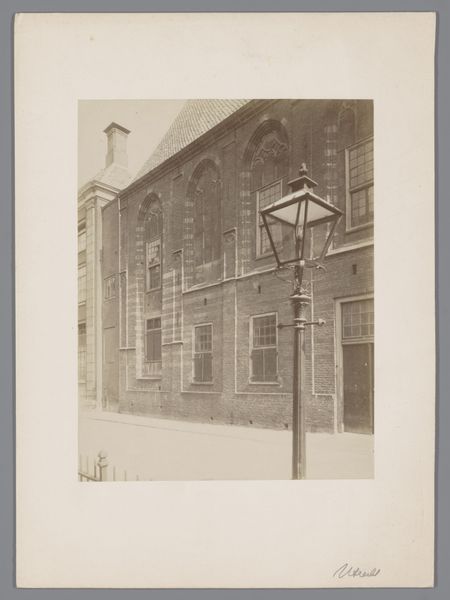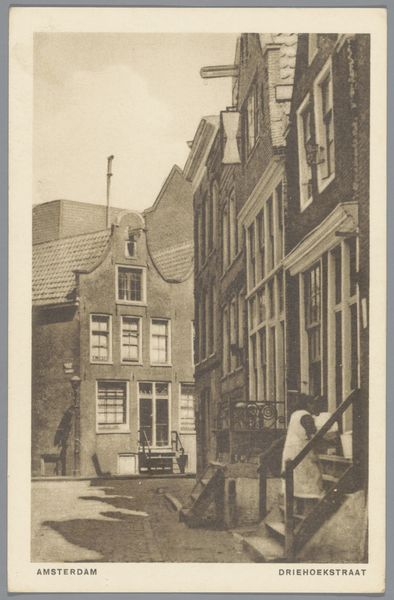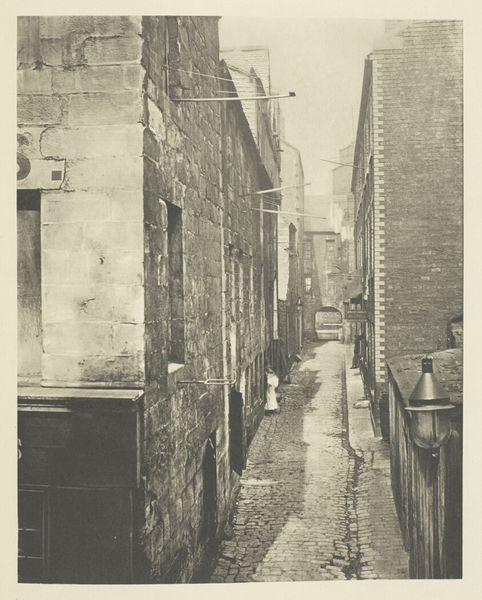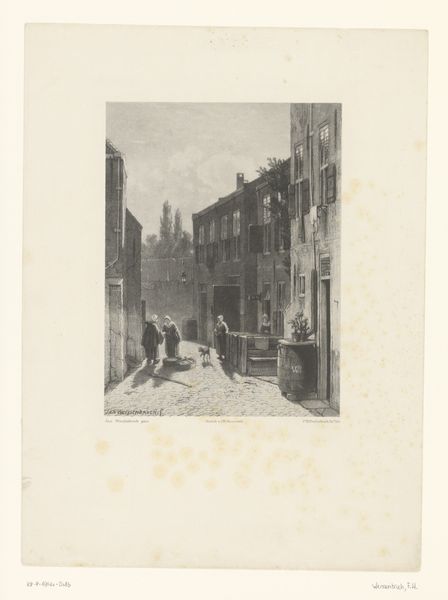
Dimensions: height 140 mm, width 90 mm
Copyright: Rijks Museum: Open Domain
Curator: Here we have an untitled photograph, referred to as “Amsterdam. Ridderstraat,” estimated to have been taken sometime between 1875 and 1930. Editor: There's something immediately captivating about this scene; the diffused light, the converging lines of the street—it creates an intimate sense of place, doesn’t it? The textural rendering is phenomenal, lending the scene an oddly tactile quality. Curator: Indeed. Note how the composition employs a relatively simple arrangement of architectural forms and figures, primarily along the receding planes of the street, yet is very effective in creating depth and volume. Editor: The fact that it's a historical photograph adds another layer of interest for me. What can you tell us about its social context? Who were these people on Ridderstraat? Curator: What’s especially intriguing is how this composition uses light and shadow. If we consider the nuances present in grayscale tonality, then this creates both a sense of atmospheric perspective and subtle geometric shapes. It serves to give life to the photograph's content. Editor: Yes, and consider how street photography like this changed visual culture; offering everyday realities and the ordinary goings-on of citizens into public consumption as a valid subject of interest, when traditionally only high society was valorized in painted portraiture. It democratized the act of visual representation in many ways, challenging accepted standards of the time. Curator: Do you think it can simultaneously represent two traditions—that is, realism with painterly impressionism? It may be read this way considering the limited depth of field with blurred outlines; while it certainly contains realism considering its clear photographic medium, yet its composition is aesthetically soft, with the artist more concerned about light, than clarity, and in this sense contains elements similar to impressionist paintings. Editor: That is precisely its enduring power and significance. Curator: After looking more closely, I am still struck by how tonality defines forms of figures on this street. Thank you for discussing the ways it challenges hierarchies of visual representations. Editor: Thank you, as well. Now I look at street-level urban history from a fresh angle.
Comments
No comments
Be the first to comment and join the conversation on the ultimate creative platform.
